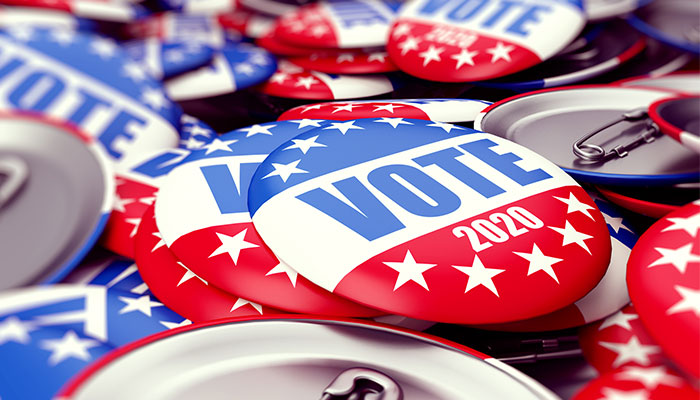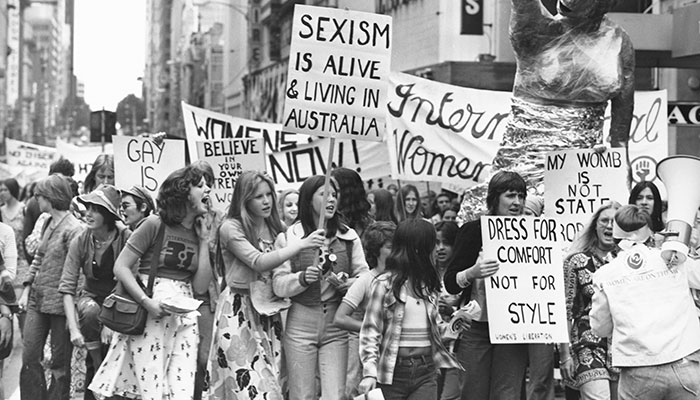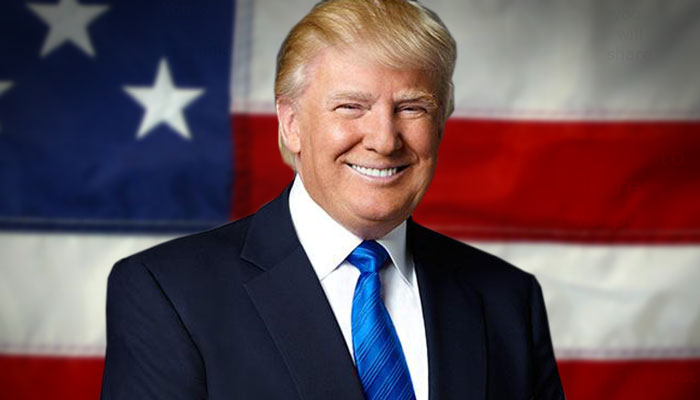In 2016, then US President Barack Obama, while praising Australia’s compulsory voting regime, said about America’s own system: “We really are the only advanced democracy on earth that systematically and purposely makes it really hard for people to vote."

50 states, 50 systems: US citizens register to vote at the county or municipal level within a state.
When you talk about voting in the United States, you are talking about 50 different systems, because it is the states rather than the national government that determines the processes by which people vote at local, state and federal elections. It is a politicised, highly contested aspect of the US political system that is subject to continual legal challenges, including in the Supreme Court.
Nationwide, people must be American citizens aged 18 and over to be eligible to vote. They register to vote at the county or municipal level within a state, bound by rules that have been put in place by the state legislature.
Some states require voters to register their party affiliation if they want to take part in that party’s primary election, convention or caucus, while others do not. Some want to know voters’ race or ethnic group, while others do not.
Within this convoluted system, as many as one in four Americans are not registered to vote, and therefore do not vote.
Deadlines for registration range from 30 days out from an election, to being able to register on the day. Some states insist on government-issued ID numbers, others accept utility or bank statements as proof of identity. North Dakota is the only state that has no voter registration.
Within this convoluted system, as many as one in four Americans are not registered to vote, and therefore do not vote.
Voter suppression or fraud prevention?
Particularly in recent years – since the Supreme Court in 2013 invalidated law that had required jurisdictions with a history of racial discrimination in voting to obtain federal approval before changing their voting rules – there has been a lot of controversy over voter suppression.

Degrees of difficulty: Some states are passing laws that require registered voters to show photo ID on polling day.
States with Republican-controlled legislatures have put in place measures that make it much more difficult for particular categories of people to vote – most notably, African American and Hispanic citizens. Republicans argue they are making voting rules stricter in order to prevent voter fraud, of which there is no substantive evidence.
States such as Georgia – which has had some of the most egregious cases of voter suppression – and Kansas have been challenged in the courts over their demands that voters provide proof of citizenship, such as a birth certificate or passport, in order to register.
A lot of Americans don’t have passports, and it can be onerous to get a birth certificate – many would give up rather than jump over all the bureaucratic hurdles required to get one.
Georgia and Kansas are also among the ‘no photo, no vote’ states that require registered voters to produce a government-issued photo ID on polling days. Sixteen states – including Democrat strongholds such as New York, California, Illinois and Oregon – require no ID at the polling booth, while others require it but have alternative avenues to enable voting if ID can’t be produced.
Having a photo ID may not seem a big deal to us, but around 12 per cent of eligible voters in the US don’t have that sort of government ID – and those voters disproportionately tend to be poor, black or Latino, and young. Among African Americans, 25 per cent don’t have the requisite ID and among Hispanics, 16 per cent.
In Wisconsin at the 2016 election which brought Trump to office, it is estimated that 200,000 more people would have cast a ballot if new, strict voter ID laws had not been in place. Democrat contender Hilary Clinton lost the state by less than 23,000 votes.
The scourge of purging
The frequency with which people have to re-register to vote has become contentious, with some jurisdictions sending out voter registration forms before every election and, if they are not filled out and returned, voters are removed from the electoral rolls in what can be large-scale purging.
Counties with a history of voter discrimination had purged people from the rolls at much higher rates than other counties.
In 2019, again in Wisconsin – a battleground state for the upcoming presidential election – a judge ordered the removal of 234,000 registered voters for the 2020 election, concentrated in the Democratic Party strongholds of Milwaukee and Madison. The case remains subject to legal dispute.
Between 2016 and 2018, nationwide 17 million people were purged. Analysis by the non-partisan Brennan Centre for Justice policy institute found that during that time, counties with a history of voter discrimination had purged people from the rolls at much higher rates than other counties.
A shrinking White America
This voter purging, as well as restrictive voting rules, is overwhelmingly concentrated in ‘red’ states with Republican governors and legislatures.

Republican pickle: Dr Lloyd Cox (pictured) says the US Republican party has increasingly oriented itself to white constituencies, even as white Americans decline as a proportion of the population.
The reason for these attempts at disenfranchisement – which are continually being contested in the courts – involve the changing demographics of the US, and the trajectory that will see white Americans shrink from 90 per cent of the population in the early 1970s and about 70 per cent today, to below 50 per cent sometime in the 2040s.
The Republican party over at least the last 25 years has increasingly oriented itself to white constituencies. As white Americans decline as a proportion of the population, you have two choices – either you have to broaden your appeal to larger sections of the part of the population that’s growing (particularly Hispanic and Asian Americans, and even African Americans) or you have to engage in voter suppression, so that your part of the electorate retains its size relative to these growing parts of the electorate.
Donald Trump himself has nicely, and very forthrightly, encapsulated the pickle the Republican party is in due to its pitching of itself exclusively as the party of a dwindling White America.
In the early days of the pandemic, as Democrats in the House of Representatives tried to get the President to sign off on a relief package that included money for the postal service, in the expectation that it would be inundated with mail-in voting, Trump said: “The things they had in there were crazy. They had things, levels of voting, that if you’d ever agreed to it, you’d never have a Republican elected in the country again.”
What to Know More?
Webinar: US Election 2020: crisis and opportunity
As the US campaign heats up, hear Dr Cox and other Macquarie scholars in sociology, international relations, politics and gender reflect on the campaign and what it might mean for the election in November and the world in 2021. Register for the September 9 at 6pm.
Register for webinar here.
Dr Lloyd Cox is Lecturer in the Department of Modern History, Politics and International Relations at Macquarie University.



